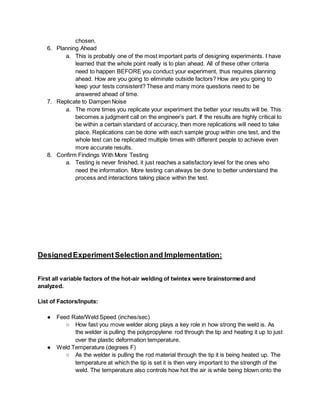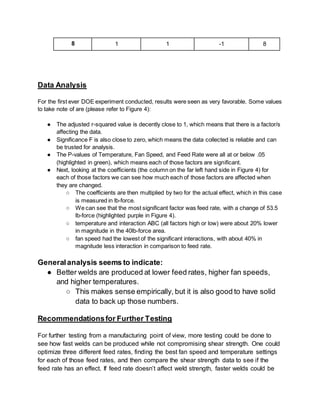This document summarizes an experiment conducted to determine the significant parameters affecting the shear strength of hot-air welds between polypropylene rod material and twintex composite material. The experiment tested different welding temperatures, feed rates, and fan speeds using a designed experiment approach. Samples were tested and data was analyzed to make recommendations for further testing.










